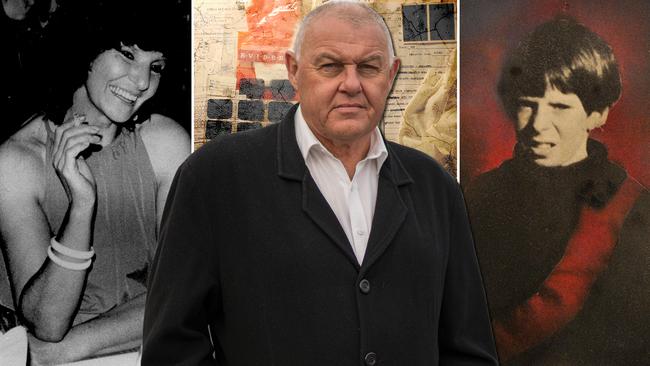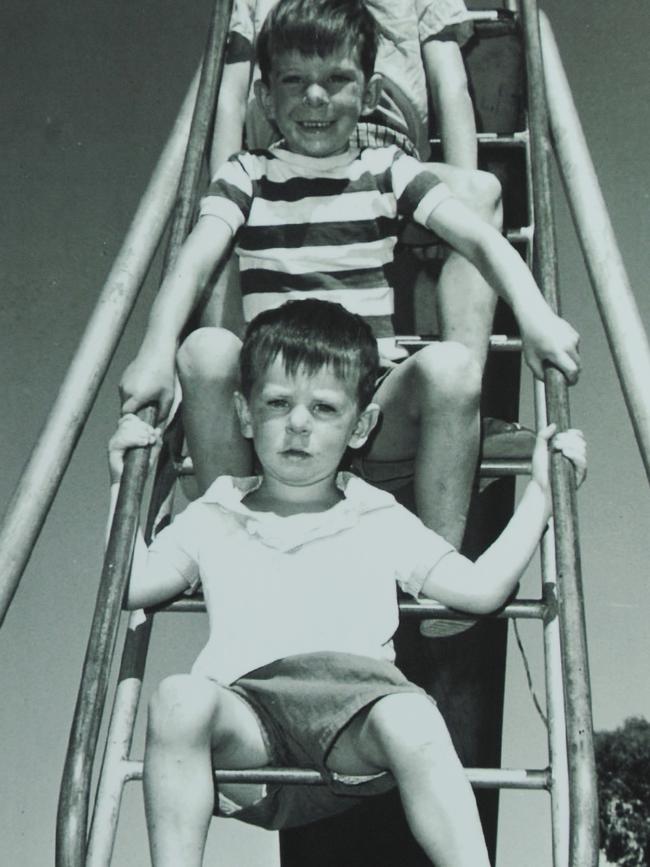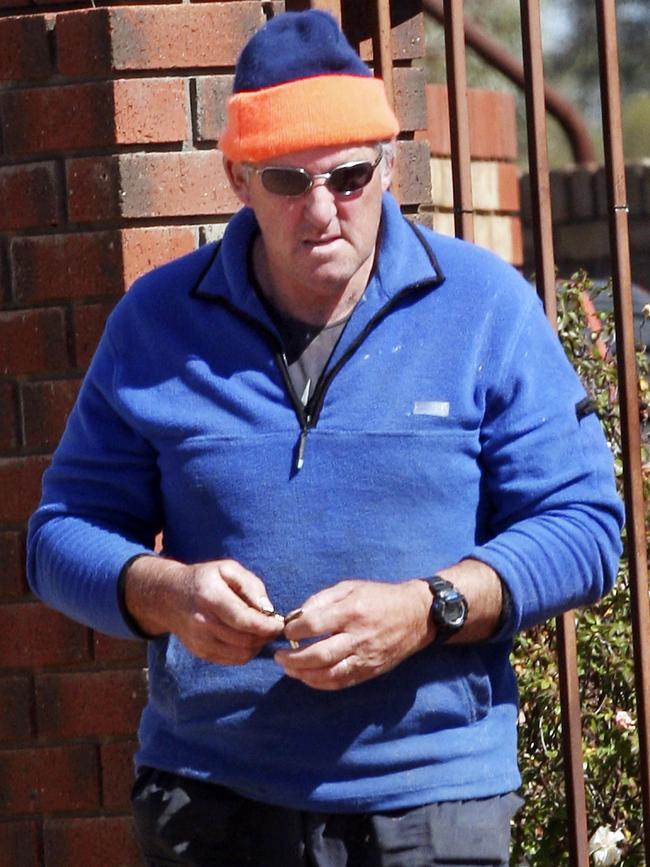Andrew Rule: What a trifle dish tells of moments before murder
A missing glass dish has a lot to tell about the final moments of a woman’s life in a murder mystery that sticks in the mind of Ron Iddles.

True Crime
Don't miss out on the headlines from True Crime. Followed categories will be added to My News.
The day after Gina Rossato vanished, a trail-bike rider found her naked body near Greenvale Reservoir, her throat slashed.
It was 36 hours since she had finished work at her sister’s restaurant, Costa Brava, in Johnston St, Fitzroy, between 1.30am and 2am on August 15, 1982.
Her sister Belinda had given Gina a glass dish of their mother’s trifle for her 19-year-old son, Mark, a reclusive youth who relied on his mother to keep food up to him.
Cab driver Antonio Bramato was doing his regular night shift — 7pm to 7am, seven nights a week. As he turned the cab into Nicholson St, he saw a woman waving at him on the Johnston St corner. He drove her to her address in Rossmoyne St, Thornbury.
Bramato could easily have told police that his passenger simply got out and that was that.
But he told them that, both being Italian speakers, they’d talked a while and he had asked Gina if she wanted to go out some time. She had gently declined, he said, explaining that her estranged husband was returning from Italy.

Bramato said he had waited until she walked the few metres to the entrance of the flats, then he drove off.
After hearing news of the murder next evening he realised the victim was his passenger and went to police.
At 2am or soon after, Gina’s son Mark would say later, he woke up to find his mother wasn’t home.
He called his aunt Belinda at the restaurant to see if she had left. She called around the family and at 3.15am her sister Lena and niece Marisa D’Agostino came from Pascoe Vale to help look for Gina.
Mark called his aunt again at 6.30am to say his mother was still not home. They went to Fitzroy police.
Ron Iddles was a young homicide detective then.
He has seen too many murders since but Gina Rossato’s sticks in his mind, which is why he is airing the case in this Sunday’s episode of the Channel Seven series, Homicide with Ron Iddles.
Her hands were tied behind her. She had been beaten, leaving the mark of a belt buckle on her buttocks.
Her throat had been cut with shocking force — a crime of hatred, or some sort of “punishment”.
Her toes had mud between them. She wasn’t sexually assaulted.
At first, Iddles wondered if the taxi driver was a spurned suitor who’d turned on her.
But Bramato’s alibi checked out: he had driven several passengers around the suburbs for the rest of his shift.
The police also looked at a local butcher who had been in a rocky relationship with Gina.
One version of the story is that he was home with his aged mother that night. Alibi accepted.

Iddles doubted that an intruder grabbed Gina outside the flats — mainly because she was almost certainly carrying the glass trifle dish.
He deduced a surprise attack would cause her to drop it, yet there were no signs of shattered glass or spilled trifle.
Iddles concluded that Gina probably got inside the flat carrying the trifle.
Exactly what happened after that, no one knows except the killer. The trifle dish was never found.
The fact that the taxi driver did not mention the trifle dish in his statement might mean only that he forgot that detail, although he recalled Gina’s dress and her bag.
Is it possible Gina put down the dish after leaving the restaurant, perhaps to light a cigarette, and left it behind? Possible but unlikely.
Gina Rossato’s son Mark was a loner and regarded as “different” by the family.
His cousin Marisa D’Agostino describes him as a “gentle giant” with underlying problems after witnessing abuse at Assumption College boarding school at Kilmore.
Iddles knows that most, though not all, victims know their killers.
Discussing the Rossato case before Sunday’s program, he recalled Mark Rossato blurting about his mother: “She wasn’t raped, was she” then immediately pointing out he couldn’t drive.
Whether Mark could drive or not, neither he nor his mother had a car, which virtually ruled out the idea that he’d disposed of her body, given she was dumped more than 20km from Thornbury.
Mark’s cousin Marisa has never suspected him — but understands why investigators might want to eliminate him first.

Marisa advances other possibilities.
Could Bromato the taxi driver (who died in 2015) have abducted Gina and tied and gagged her somewhere before finishing his shift then returning to dispose of her? Possible but unlikely.
Then there’s the Maria James link. An inquest this month into the James murder at a nearby bookshop in 1980 raises another possibility.
Maria, too, was tied up and killed savagely with a knife. She knew Gina. Is it significant they attended the same church?
Could the same killer be responsible? If so, was it pedophile priest the late Fr Anthony Bongiorno?
Or violent sociopath Peter Keogh, a serial offender who worked locally and later killed his ex-girlfriend Vicki Cleary in Coburg in 1987?
In both murder cases, there’s the spectre of an unknown man.
Maria James had a male visitor, never identified. And Gina Rossato had confided in friends that she had a new admirer named “Max”.
But was Max’s real name Mario, a notorious Italian-speaking criminal whose car was reputedly seen waiting outside the Rossmoyne flats the previous week? Unlikely but possible.
“Max” is a mystery figure who could hold the key to the murder.
Gina sometimes worked casual shifts at a cafe in High Street, south of Bell St. Is that where “Max” or Mario met her? Or where some other unknown man fixated on her?
Marisa can’t help wondering about the butcher boyfriend whose relationship with Gina had ended so heatedly that Mark had once “kicked him out” of the flat to end an argument.
Iddles could not help speculating that a butcher’s cool room would be the perfect place to conceal a murder, especially with the shop shut on a Sunday.
But he eventually ruled him out for other reasons.
He will air the key possibilities in this week’s episode in the hope that someone can now reveal something to help solve the mystery of who killed Gina Rossato.
THE SAD TALE OF MISSING SCHOOLBOY
The case he tackles in his final episode next week, the abduction and murder of a schoolboy, is the reverse sort of mystery: he suspects he knows who did the crime but doesn’t know where the body was hidden.
Of all the unknowns that stop a former homicide detective from sleeping, the fate of a missing and obviously murdered child ranks with the worst.
For Iddles, who worked on crews that solved dozens of cases, the disappearance of 12-year-old Terry Floyd from Avoca one Saturday in 1975 is among the worst.
Not because he worked on the Floyd case but because he didn’t.
It wasn’t until 25 years later that one of Terry’s sisters, Cheryl Lane, came to Iddles with the heartbreaking story — one he has gone over many times since with her brother Daryl, who has devoted thousands of hours over 40 years to search for Terry’s remains.
On June 28, Terry got a ride from home in Maryborough to Avoca to play Monopoly with a friend.


He told his friend’s family that “Unc” gave him the ride over and would pick him up around 5pm on the highway to go home.
Around 4.45pm, Terry waited at the pre-arranged spot. A local woman saw a boy matching his description standing near a light-coloured Holden panel van beside the highway.
Soon afterwards, another witness saw a similar Holden panel van parked along the highway towards Maryborough with a boy standing behind it. And a third witness saw a similar van at the turn off into Box Flat Track.
Terry Floyd was never seen again.
At first, local police dismissed his worried parents with assurances he was just a runaway who would turn up.
By the time Ballarat detectives took a look, the trail was cold — and muddied.
One red herring was “Unc”, real name Frank Drake.
He was a suspect because he had an unsavoury reputation for hanging around junior footballers.
Local parents warned their children not to get in a car with “Unc” but Terry had hitched a ride to Avoca with him and was planning to get a ride home again.
Iddles soon established that Drake (now dead) drove a Studebaker, not a Holden panel van. Another notorious local pedophile, a poultry farmer, was ruled out because he was in jail at the time.
But a third man, Raymond Kenneth Jones, had both a Holden panel van and “form” for child molesting.

Jones told police he was in Avoca that day — working on a car with a friend at Ryker’s garage all afternoon. The friend supposedly vouched for Jones’ version of events.
The police didn’t shake Jones’ alibi mainly because they didn’t try.
This was puzzling, because Jones was on bail at the time for sexually assaulting a boy in a toilet block, one of several sex offences he has faced.
A psychiatrist called at the bail hearing recommended Jones be held in custody because he was an “impulsive” pedophile with “the propensity to kill.”
Jones has remained both active and wary. When Iddles put together a brief for an inquest in 2001, he offered Jones a polygraph (lie detector) test.
“It’s a win-win,” Riddles told the pedophile, then 49, who has lived in the Mildura area for years.
“If you pass the polygraph, you’ll never hear from me again. If you don’t, it can’t be used against you in court.”
Jones took legal advice to refuse the test. But no one associated with his defence has ever claimed Iddles was targeting the wrong man.
Meanwhile, an associate of Jones, “Buster” Allan (now dead), told a third person who told Terry’s brother Daryl that Terry had been thrown down a mineshaft.
Daryl devoted every weekend to digging out the shaft closest to where Terry was last seen, the old Morning Star mine.
In 2017, the State Government granted him $100,000 to hire machinery in the search.
They found no human remains — but, of course, the goldfields country is riddled with old shafts and any one of them could be Terry Floyd’s resting place.
When Iddles returned to the case this year for his series Homicide With Ron Iddles, it was what he calls “the last roll of the dice” to hook the vital piece of information that might locate the lost boy’s remains.
The Floyd episode, which airs next Sunday, is more about the family’s grief and the search for truth than about blame.
Still, it’s true to say that the police work in 1975 was slack.
When Iddles traced the former owner of the garage where Jones claimed he had worked all that Saturday afternoon, one telephone call was enough to establish it was a lie.
The garage man, Nick Ryker, told Iddles two things. One was that he was playing football that day and would not have let anyone work unsupervised in his garage, which was attached to his family residence.
The second thing Ryker said was that no police had ever contacted him to check Jones’ shaky alibi.
If they didn’t do that, what else did they miss?
More Coverage
Originally published as Andrew Rule: What a trifle dish tells of moments before murder





